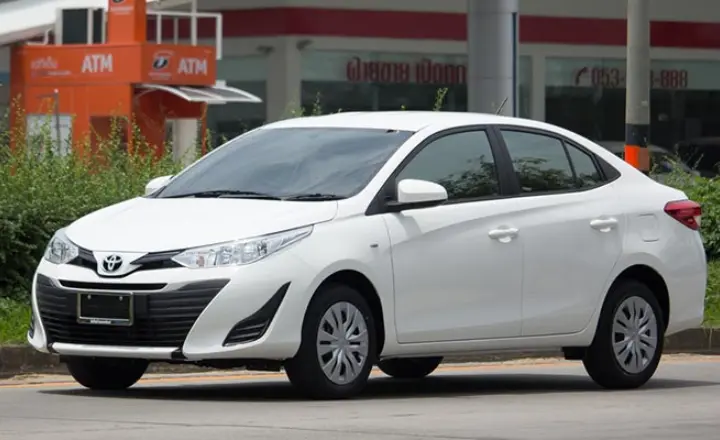The Toyota Yaris, formerly the Toyota Echo, has been a popular choice for drivers seeking reliability and efficiency since its inception in 2000. With each new generation, this compact car has undergone improvements, leading to varying levels of performance and satisfaction among consumers.
Here is the genetic evolution of the best & worst Toyota Yaris years from its humble beginnings as the Echo to the cutting-edge designs of today’s models that will help potential buyers make informed decisions when choosing their next ride.
Toyota Yaris Generations
Toyota Yaris has four distinct generations under its belt, and each iteration of this popular model has brought its blend of innovation, style, and performance to the table.
| Generation | Years |
|---|---|
| 1st Generation | 2000-2005 |
| 2nd Generation | 2006-2013 |
| 3rd Generation | 2014-2019 |
| 4th Generation | 2020-Present |
Each generation signifies a milestone in the vehicle’s development. When considering the best & worst Toyota Yaris years across these generations, it’s crucial to weigh factors like reliability ratings, available features, and personal preferences.
Each year presents its unique blend of strengths and weaknesses; thus, conducting thorough research is paramount in determining which model best suits your needs.
Regarding performance and reliability, Neutral Years may not stand out compared to the best years of Toyota Yaris, but they also don’t fall into the category of worst years. These years are often marked by a balance between quality and innovation, neither outstandingly great nor disappointingly underwhelming.
Toyota Yaris Best, Neutral, and Worst Years:
| Generation | Best Years | Neutral Years | Worst Years |
|---|---|---|---|
| 1st Generation | 2001, 2002 2003, 2005 | 2000 | 2004 |
| 2nd Generation | 2006, 2007, 2010 2011, 2012, 2013 | 2009 | 2008 |
| 3rd Generation | 2015, 2017 2018 | 2014 2016 | 2019 |
| 4th Generation | 2021 | 2022 2023 | 2020 |
We categorized data after getting from these sources:
- Consumer Reports
- J.D. Power Reports
- Edmunds Reports
- Kelley Blue Book Reports
- National Highway Traffic Safety Administration (NHTSA)
- Insurance Institute for Highway Safety (IIHS)
- Car and Driver
- Motor Trend
- Safety Ratings
- Performance and Resale value
Collecting data from these reputable sources allows us to view the Toyota Yaris generations comprehensively. Some factors might not always positively contribute to a car’s overall ranking.
For instance, consumer reports can highlight common issues or complaints that could lower a vehicle’s score, while safety ratings from organizations like NHTSA and IIHS may shed light on potential weaknesses in crash tests.
The subjective nature of evaluations by publications like Motor Trend means personal biases can influence the final rankings.
Here are the combined scores for each Toyota Yaris model year. This is an illustration to get a better look and decide which Toyota Yaris model years to avoid and which to look for.
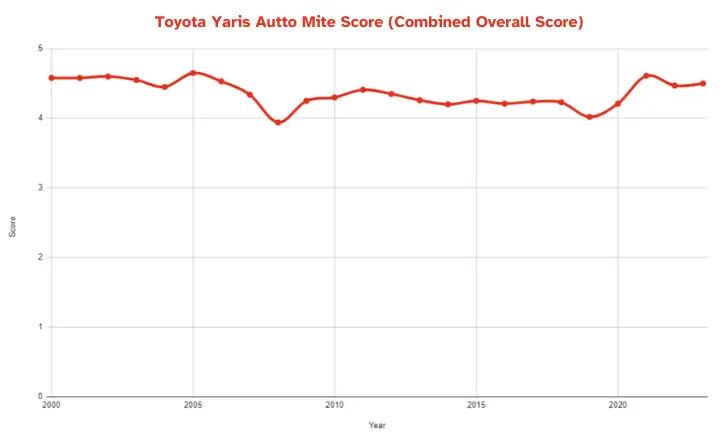
We examine each generation of Toyota Yaris models and list the best, neutral and worst years according to our research.
Best & Worst Toyota Yaris Years in 1st Generation (2000-2005)
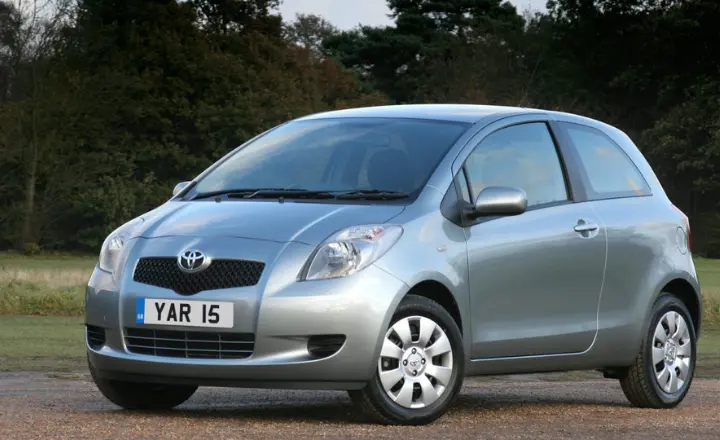
The Toyota Yaris 1st generation, spanning from 2000 to 2005, witnessed a variety of highs and lows across its production years. These years are categorized as best, neutral and worst years.
Best Years: 2001, 2002, 2003 and 2005
Despite being part of the same generation, the Toyota Yaris models from 2001, 2002, 2003, and 2005 have unique characteristics that set them apart regarding consumer ratings.
- 2001: Toyota Yaris made its debut, hailed for its compact size and fuel efficiency
- 2002: Saw upgrades in safety features and improved engine performance for the Yaris model.
- 2003: Introduced innovative technology enhancements in the interior design, enhancing driver comfort.
- 2005: Garnered the highest consumer rating for reliability, low maintenance costs, and sturdy build quality. The 2005 model stands out as one of the best in terms of overall value and performance.
When we go through the best years for the Toyota Yaris’ first-generation lineup, it becomes clear that each year brings something valuable for consumers. A model is available for various preferences and needs, from reliability to design to affordability.
Neutral Year: 2000
The year 2000 was neutral for the Toyota Yaris 1st Generation, marked by a balanced mix of positives and negatives. Its fuel-efficient design and compact size appealed to urban dwellers seeking affordable and reliable transportation.
While some owners faced issues with engine reliability and overall build quality, leading to mixed reviews regarding long-term durability. Looking back, this year served as a crucial stepping stone in the evolution of the Yaris models, setting the stage for future successes in subsequent generations.
Toyota Yaris years to Avoid: 2004
Throughout the automotive industry, 2004 is often cited as one of the worst years for mechanical concerns regarding the Toyota Yaris 1st Generation. Owners reported issues related to :
- Engine reliability
- Premature wear and tear.
- Problems with the transmission, suspension components, and electrical systems
These persistent mechanical concerns sparked discontent among drivers and 2004 may be remembered unfavorably regarding mechanical concerns for the Toyota Yaris 1st Generation.
Looking back at the first generation of Toyota Yaris models, it is clear that 2004 has been challenging.
Best And Worst Toyota Yaris Years in 2nd Generation (2006-2013)
Each year of the Toyota Yaris 2nd Generation has brought unique experiences to drivers, some proving to be more commendable than others.
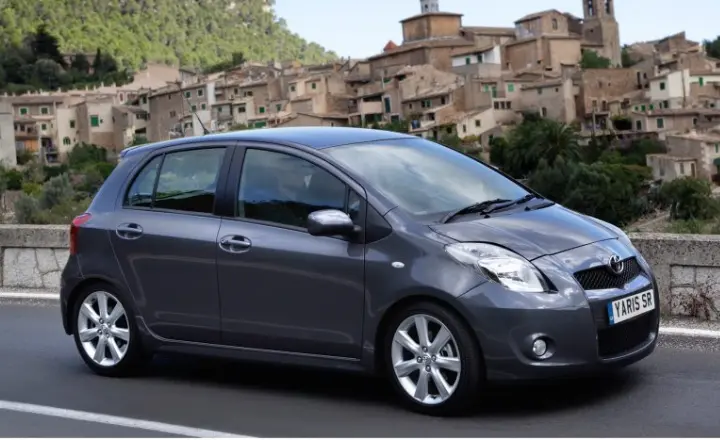
Best Years: 2006, 2007, 2010, 2011, 2012 and 2013
In Toyota Yaris 2nd Generation (2006-2013), certain years stand out for their reliability, performance, and overall value.
- 2006: Toyota Yaris (2006) is praised for its reliable engine performance and compact design.
- 2007: This year followed suit, showcasing improvements in fuel efficiency and reliability that solidified the Yaris’ reputation as a practical and dependable driver.
- 2010: where the Yaris received a sleek redesign that elevated its aesthetic appeal and technological features.
- 2011: Moving on to 2011 enthusiasts welcomed an upgrade in performance and handling, making driving the Yaris an even more enjoyable experience.
- 2012: Then came 2012, which focused on enhanced safety features, giving peace of mind to drivers and passengers alike.
- 2013: In 2013, the Toyota Yaris continued to impress with its affordability and quality craftsmanship, making it a top contender in its class.
These standout years combine to offer a comprehensive range of qualities that make them the best choices within the Toyota Yaris lineup.
Neutral Year: 2009
In the neutral year of 2009, the Toyota Yaris presents its best and worst traits. Known for its fuel efficiency and compact design. The 2009 model offered practicality and affordability to drivers seeking a reliable car for daily commutes. Issues with interior quality and lacklustre performance compared to competitors slightly tarnished its reputation.
Toyota Yaris years to Avoid: 2008
2008 marked a tumultuous period for Toyota Yaris with several issues plaguing the model. One major problem was the widespread reports of unintended acceleration, leading to safety concerns and numerous accidents.
Besides this, quality control issues surfaced in 2008, with many drivers experiencing problems with braking systems and other mechanical failures. These issues significantly impacted the reputation and Toyota Yaris reliability.
Best & Worst Years for Toyota Yaris 3rd Generation (2014-2019)
Each year of the Toyota Yaris third generation has its strengths and weaknesses, careful consideration of individual needs and priorities is essential to choosing the best fit for optimal driving satisfaction.
Best Years: 2015, 2017 and 2018
Among the best years for the Yaris 3rd generation include 2015, 2017, and 2018. These particular model years have been praised for their fuel efficiency, comfortable ride quality, and overall value for money.
2015: This year is known for its exceptional fuel efficiency. With rising concerns over environmental sustainability and increasing gas prices, this characteristic made the 2015 Toyota Yaris popular among eco-conscious drivers.
2017: This year, Toyota stepped up by including advanced safety technologies like automatic emergency braking and lane departure warning systems in the Yaris. This focus on driver and passenger well-being set the 2017 model apart from its predecessors.
2018: It was all about the style and design of the Toyota Yaris. With sleek exterior lines and a modern interior layout, the aesthetics of the 2018 model drew in those looking for functionality and flair in their daily drives.
It is fascinating to see how each year brought a unique element. Some may prioritize fuel efficiency over performance or safety over all else – these years offered something for everyone.
Neutral Years: 2014 and 2016
2014 and 2016 are often referred to as the neutral years as both years had their pros and cons. In 2014, drivers appreciated the fuel efficiency of the Yaris but were underwhelmed by its lacklustre performance on the road.
While in 2016, customers enjoyed a revamped interior design with higher-quality materials, some were frustrated by a decrease in cargo space compared to previous models.
Toyota Yaris Year to Avoid: 2019
The 2019 model faced criticism due to the following drawbacks:
- despite being a well-rounded car overall, it has received criticism for its lacklustre acceleration and underwhelming engine performance.
- Another downside of this model year is its limited cargo space, with some competitors offering more practical storage solutions for everyday use.
- The interior of the 2019 Toyota Yaris has also been highlighted as a weakness, with some reviewers mentioning that it lacks the upscale feel and modern technology features found in other vehicles in its class.
These factors contributed to a lacklustre reputation for the 2019 Toyota Yaris within its model year range.
Best & Worst Years for Toyota Yaris 4th Generation (2020-Present)
The Toyota Yaris 4th generation, from 2020 to the present, has seen impressive advancements and a few pitfalls. Now we will review its best, neutral, and worst year.
Best Year: 2021
The year 2021 is a pinnacle for the Toyota Yaris 4th generation, thanks to its incorporation of the innovative TNGA platform. This cutting-edge platform brings about several qualities that set the 2021 model apart from previous years:
- Enhanced driving dynamics for a more engaging and enjoyable driving experience
- Improved fuel efficiency for cost savings and eco-friendliness
- Superior handling and stability on various road conditions.
By leveraging the TNGA platform, Toyota has elevated the Yaris to new heights. The combination of performance, efficiency, and comfort within one model makes 2021 the best year for Toyota Yaris.
Neutral Years: 2022 and 2023
In 2022 and 2023, the Toyota Yaris of the 4th generation enters a period of neutrality in terms of performance and features. For these reasons, neither year stands out as the best or worst.
2022 Toyota Yaris:
- Lack of significant updates compared to previous model years
- Some users reported minor quality control issues with certain components
2023 Toyota Yaris:
- Limited availability of advanced technology features found in competitors
- Continued complaints about the underwhelming engine performance for a subcompact car.
In an industry where innovation and advancements are key, the Toyota Yaris’s iterations in 2022 and 2023 seem to have struggled to stand out from their predecessors.
Toyota Yaris year to avoid: 2020
This particular year marked a significant decline in sales and popularity for the fourth-generation model. Many customers expressed disappointment with the overall driving experience of the 2020 Toyota Yaris, citing issues such as:
- Poor handling
- Subpar interior quality
- Engine reliability
- Transmission system
Considering the reputation of the Toyota Yaris for being a reliable and efficient car, it was disappointing to see such widespread issues in the 2020 model. Competing against other models within its class, this year stood out as one of the least favoured among consumers.
Toyota Yaris Average Resale Values
The Toyota Yaris has shown relatively strong average resale values over the years compared to Toyota Corolla Years and other subcompact cars.
- Due to their reliability and fuel efficiency, the best Toyota Yaris model years for resale value are 2017, 2018, and 2019.
- While some of the worst years for resale value include older models like those from 2012 and 2013 due to aging technology and design.
Buyers can potentially recoup more of their initial investment when it comes time to sell or trade in their vehicle by choosing well-regarded model years.
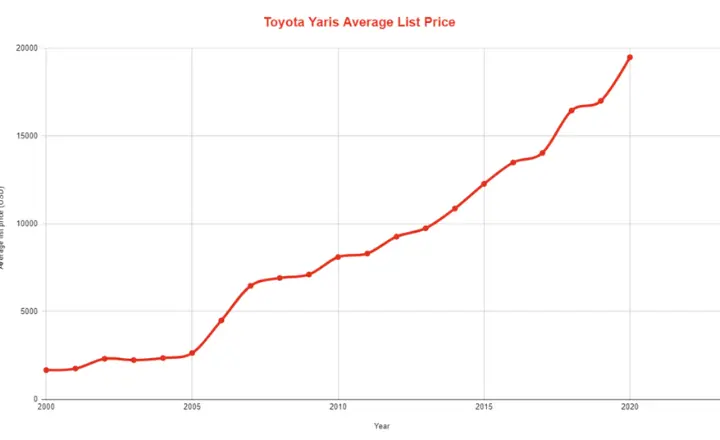
Conclusion:
The Toyota Yaris has gone through different iterations over the years. From the reliable and fuel-efficient models of the early 2010s to the more stylish and technology-packed recent versions, there is a Yaris for every driver’s preference.
It is essential for buyers to research the best & worst Toyota Yaris years and compare their performance, reliability, and features to ensure they get a vehicle that meets their needs and expectations.
FAQ’s:
Which year is considered the best for the Toyota Yaris?
The 2015 Toyota Yaris is often praised for its reliability and performance.
Are there any years of the Toyota Yaris to avoid?
The 2007 and 2008 models have been known to have more frequent mechanical issues.
How fuel-efficient is the Toyota Yaris?
The Toyota Yaris is known for its excellent fuel efficiency, with some models achieving over 40 mpg on the highway.
Can I find budget-friendly options among different Toyota Yaris years?
Yes, older models like the 2013 or 2014 can be great choices for those looking for a reliable yet affordable vehicle.
How does a Toyota Yaris’s resale value compare to similar vehicles?
The resale value of a Toyota Yaris tends to hold up well over time, making it a smart investment for those looking to sell or trade in their vehicle.

